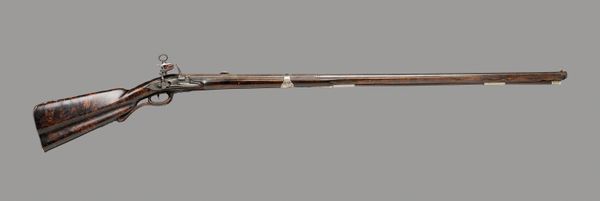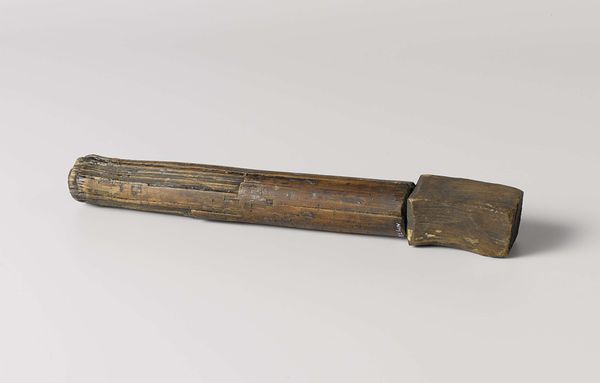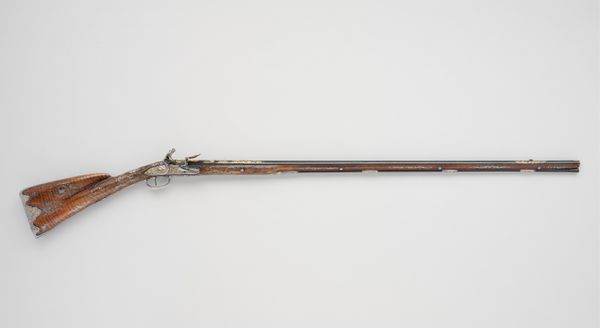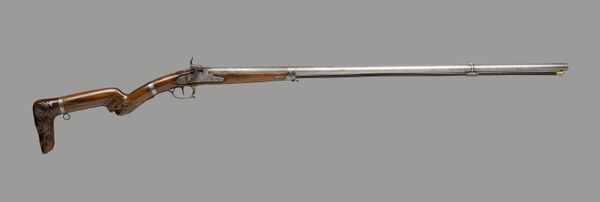
Flintlock Fowling Piece Given by the Empress Catherine II of Russia to the French Ambassador 1745 - 1763
0:00
0:00
metal, wood
#
baroque
#
metal
#
wood
#
history-painting
Dimensions: L. 150 cm (59 in.) Barrel L. 110.8 cm (43 5/8 in.) Wt. 7 lb. 7 oz. Caliber .60
Copyright: Public Domain
Editor: This flintlock fowling piece, crafted between 1745 and 1763, was gifted by Empress Catherine II of Russia. The wood and metal details strike me; even with its lethal purpose, it exudes a certain elegance. What do you see when you look at this artifact? Curator: Immediately, I observe the formal interplay between line and surface. The long, slender barrel creates a dominant horizontal axis, countered by the curving lines of the stock. Notice the tension generated by the contrast between the polished, reflective metal components and the warmer, textured wood. Editor: So you’re focusing on how the materials interact, not necessarily what the rifle *represents*? Curator: Precisely. The engraver’s art, the artisan’s careful application of materials, these generate the fowling piece's presence. Consider the way the light dances across the metalwork. Do you see how those reflected points guide your eye along the body? Editor: Now that you mention it, the engraved metal directs the gaze beautifully along the gun. I also notice that the composition draws your eye, as you said, along that barrel— almost like a formal drawing on a plain backdrop! Curator: Yes! The arrangement presents a compelling example of form dictating our experience, divorcing object from utility. What thoughts emerge as you explore the form of the artwork now? Editor: Before, I saw the piece as an object; now I see it as a construction of lines and reflective points that give it motion. A formal composition. Thank you. Curator: My pleasure. Approaching art via intrinsic qualities will help decode an art's underlying intention and meaning, expanding your insight and enjoyment for decades to come.
Comments
No comments
Be the first to comment and join the conversation on the ultimate creative platform.













